Hyacinth Suarez
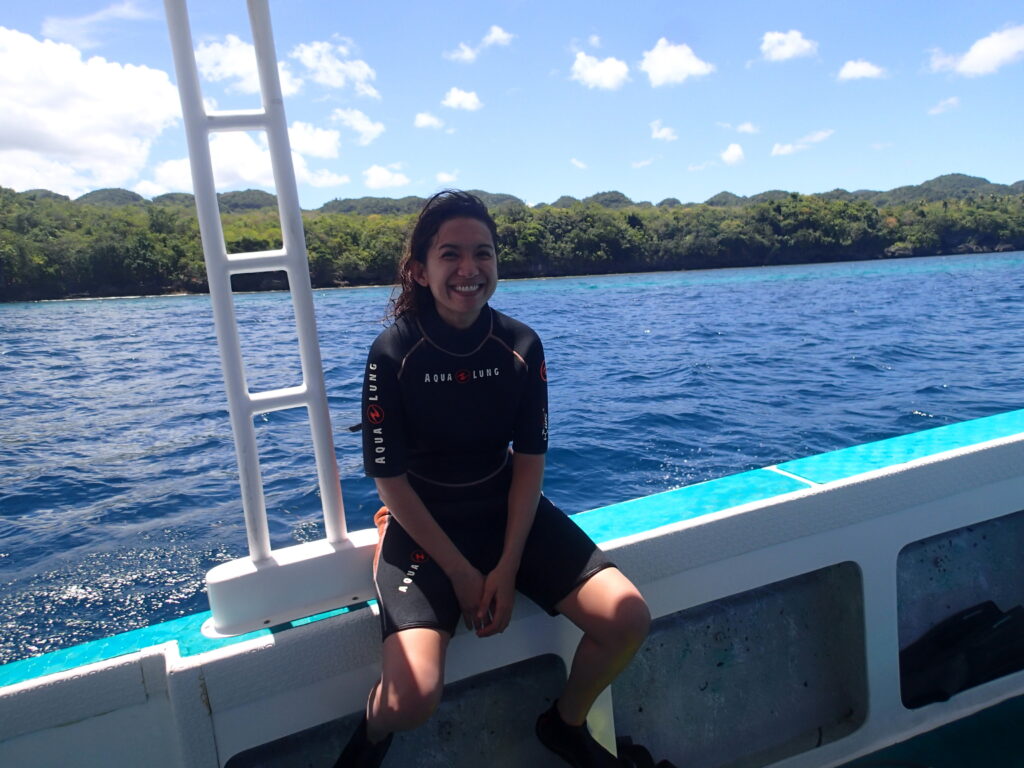
Hyacinth Suarez is a Boholana* Marine Biologist. Growing up along the coast of Bohol, she has always been fascinated by the biodiversity of the marine environment. At present, she is a faculty member of the College of Arts and Sciences of Holy Name University (HNU) and manager of HNU-Center for Marine Science Studies. Hya obtained her Masters in Coastal Resource Management at Silliman University in Dumaguete City and PhD degree in Biology (Marine Biology track) at the University of San Carlos in Cebu City, Central Philippines. Her primary research interest is mesophotic corals, specifically the black corals. She is part of a research project on Mesophotic Coral Ecosystems in selected areas of the Philippines. Funded by the Department of Science and Technology, this project is a collaborative effort between three Filipino universities: University of the Philippines – Diliman (through the Marine Science Institute), Mariano Marcos State University, and Holy Name University.
*Boholanos hail from Bohol Island in the Central Visayas region of the Philippines. The island province is known for its coral reefs and fascinating geological formations such as the Chocolate Hills.
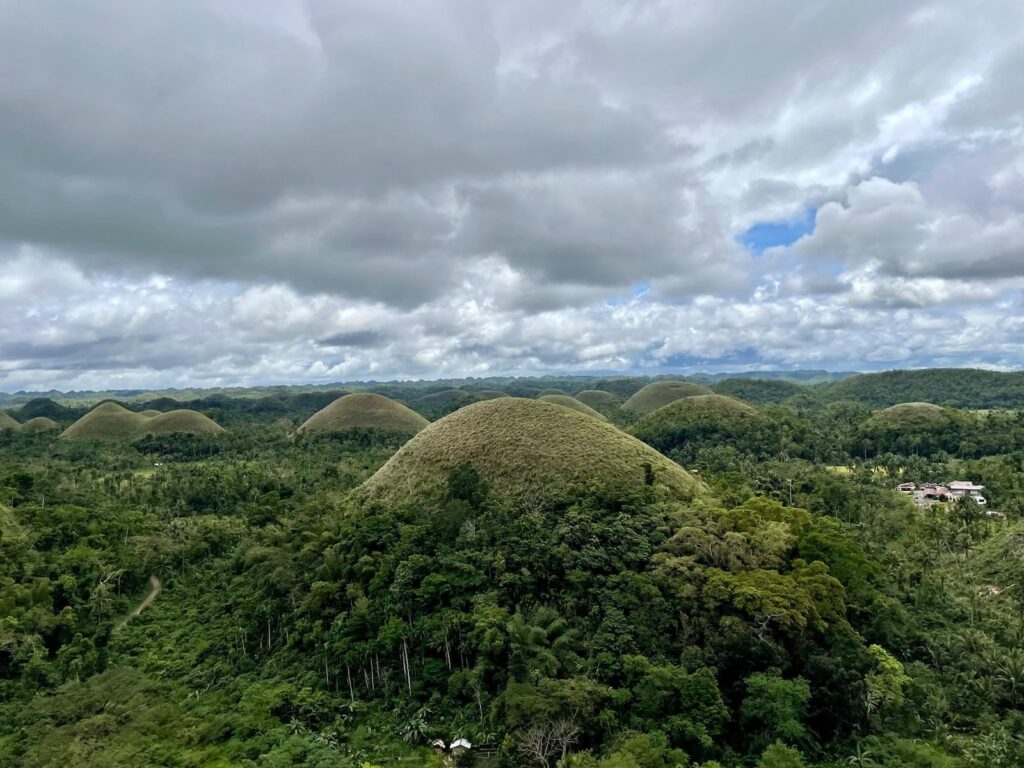
Let’s go back in time, could you paint a picture of your childhood for us?
I’ve had a very interesting childhood. I was born in the Municipality of Makilala, North Cotabato in 1979. Cotabato is a province on the island of Mindanao*. My mom was from Bohol and it was common for Boholanos at the time to seek greener pastures outside of the island. She found work in Mindanao and got married there. She had me around the time that martial law was coming to an end and there were many local wars all over Mindanao, not exactly the safest place to bring up a child. So when I was about three years old, we returned home to Bohol. I have no siblings, I grew up with a mom and a grandma. We were called Tres Marias: three generations, one house.
We lived on the mountains away from the sea in Mindanao but our house in Bohol was barely 10 meters from the beach. I don’t remember much from this time but my mother often tells the story of when I saw the ocean for the first time, I was awestruck. I ran all the way to the beach and sat staring at the waves. We use the word ‘dagat’ in our local dialect for the beach. So I would ask to go the ‘dagat’ all the time. One day my mom couldn’t find me anywhere and was worried sick. Our neighbor came up to her and said “Do you know that your daughter is at the beach?”
Growing up, we couldn’t afford a lot of toys so the beach became my playground. My toys were all the rocks and shells. The crabs and molluscs were my playmates. When it was low tide, I’d walk around the rocks and carefully observe all the marine animals and seaweeds. I’d imagine what it would be like to live in the ocean. I had no idea then that this time would have such a big impact on the career that I chose later on in life.
I had a fun childhood full of sun, sand and music.
*Mindanao is the second-largest island of the Philippine Archipelago. It is a mountainous island surrounded by four seas: the Philippine Sea to the east, the Sulu Sea to the west, the Celebes Sea to the south, and the Mindanao Sea to the north.
Tell us about your time as a student. Were there any subjects you particularly loved or hated?
I went to Valencia Central Elementary School. It was a government school where the focus on academics wasn’t too rigorous but we got to learn so many things. Things you cannot learn from books. It molded me into who I am today.
What I remember most fondly from elementary school is a yard full of mahogany trees and a kitchen garden. We kids competed for the best harvest of bok choy in the garden. We couldn’t afford fertilizers so we had to give our plants all our time and commitment. And to think of clever ways to keep garden slugs and snails away from them.
I studied music at an informal school near home. At 5, I started learning the piano. My teacher was a pianist who offered classes to kids interested in music at a nominal fee. She was deeply passionate about her job. After piano practice I’d always find my way to the beach.

When I was about 10 years old, I taught myself the ukulele and competed all the way to the district level. Me and my cousins had even formed a band together to practice all our instruments. For the longest time, I was convinced I’d become a musician.
I did my high school years at a private school and experienced academic pressure for the first time. I didn’t love or hate any subjects in particular but my interest in mathematics and physics has been an unrequited love.
Is there a person who you feel has been influential in you choosing your career path?
Coming up to high school I’d thought about pursuing music for my undergraduate studies. However, this would’ve required me to move all the way to Manila and live there. It was not something we could afford at the time. My cousins who had played the piano with me also migrated with their family to the US. By my fourth and final year of high school my resolve began to waiver. One day I came home from school and told my mother “I don’t really know what I want in life”.
My mom has always been a big reader and, thanks to her, my time in high school revolved around reading lots of pocket books on many different subjects. She handed me a book and said “I read a pocket book recently- you might be interested in the kind of profession this guy has”. She lent me a book about a marine biologist. In that moment all the pieces of the puzzle fell in place and I enrolled in a marine biology course for my undergraduate studies. We had plenty of advanced math and physics which I struggled with but my interest in the subject drove me to finish my studies.
The person who really pushed everyone in our family to finish school, regardless of our chosen career, has been my grandmother. She herself had only studied up to the seventh grade. My grandfather died early of tuberculosis. At the time TB was an epidemic in the Philippines. My mom, who was one of eight siblings, had just finished college. My youngest aunt was only two years old. And according to my grandmother, at his deathbed grandpa told her to do everything she could to get all their kids to finish school because a good education was the only way to push the family out of poverty.
My grandma kept her word and encouraged all her kids and grandkids to finish high school and pursue higher education. She would say “No matter what, even if people laugh at you because of your uniform, you have to finish school because that will save you later in life.” There were days when I had to eat a tiny pack of ramen and dried fish for a meal but we all finished school because of her.
What came after you finished college?
After college, when my mother was about to retire from her job as a budget officer at the municipal hall, she told me “The mayor wants me to continue working for the town for another four years. I’m not supporting anyone. Would you like to go back to school?”
I’d been toying with the idea of doing a PhD and decided to pursue a Master in Marine Sciences at Silliman University in Dumaguete city in preparation for a career in research. I enrolled in the first semester of the marine biology course and felt that it was very similar to what I had already studied in my undergrad. So I sought academic advice and was offered a different degree that did not affect my initial enrollment. It meant that I would still be credited whatever I had studied in my first semester. I then pursued a masters in Coastal Resource Management. As part of my training I interacted with coastal communities whose livelihood depended on fishing. I continued working with an NGO on community-based projects for a short time afterwards.
What about teaching and research- how did you get involved in the academic aspect of marine biology?
As a young student I was very idealistic about marine resource conservation. I remember doing workshops with groups of fishermen about protected areas, overfishing and coral reefs. The idea was to encourage them to conserve resources for future generations. One such day a quite old fisherman raised his and asked me “How are we going to look forward to a better tomorrow, if we cannot even survive until tomorrow? When we have nothing to eat?” He asked if I’d ever experienced hunger in my life. And even though I came from simple means, we never had to skip a meal. The fisherman talked about times when the weather was bad and they couldn’t go fishing, their entire family would wind up eating broken rice and salt once a day. It was an eye-opener for me. There was a huge gap between policy makers and the people whose lives were being affected by such policies. I found myself becoming rather disillusioned by the conservation practices we were trying to implement. I began to realize then that this was a difficult profession for me because I became very emotionally involved with the communities.
It was around this time that a friend of mine who was working at Holy Name University in Tagbilaran suggested I give teaching a shot. I began teaching undergraduate level natural sciences at the University and was surprised by how much I enjoyed it. It was a lot of work though- becoming a teacher, completely changed how I viewed teachers. There were days when I stayed up the whole night preparing lessons for the next day because I was teaching eight different subjects at the same time. The job allowed me a lot of freedom in designing the coursework. I got a chance to talk to young people about my own experiences in working with communities and the need for a balance between conservation policy and practice.
I had expressed my interest in academic research to my colleagues. One fine day our University president called me over to meet a physicist, Mel, who had recently finished his PhD in the Netherlands so I could learn more about how research worked. The president wanted us to explore potential collaborations with our natural sciences program at the University. I was really hesitant at first because our fields were so different. During our interaction Mel suggested the idea of my pursuing a PhD while I continued teaching at the University to the president. This is what propelled my first steps into fundamental research. Mel and I continued talking more about life as an academic. Soon our discussions over coffee turned into lunch and dinner. And we have now been together for over 10 years!
Did you have a project or study organism in mind when you began your research?
A chance discussion with a Peace Corps volunteer in 2012 led me to work on black corals. He was a diving instructor at Jagna, Bohol and suggested exploring the region where the corals are found.
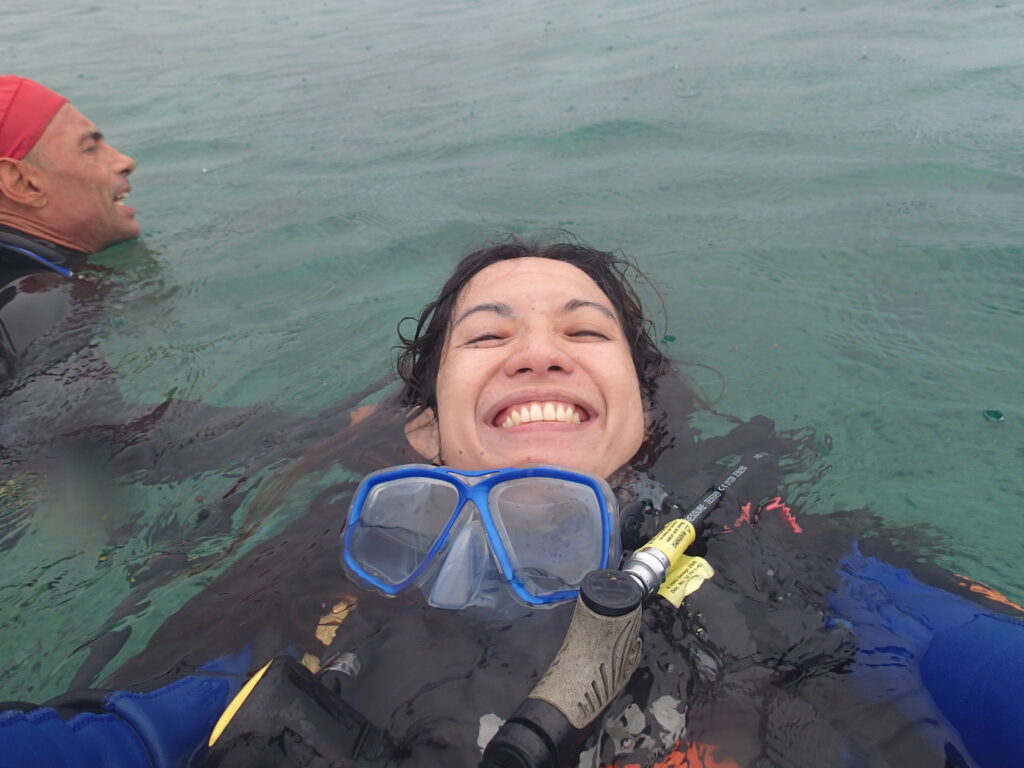
Black corals belong to the Class Hexacorallia, meaning they have six tentacles, just like the reef-forming Scleractinian or stony corals (and unlike soft corals, which have eight tentacles). Black corals, however, differ from Scleractinian corals in that they possess an organic skeleton composed of chitin which is jet black or brown. While the skeleton is dark in color the actual organism itself ranges from white to orange to red. Interestingly, the skeleton of a black coral can be bent and molded at high temperatures without breaking. This makes it an important material for the jewelry industry. These corals were used as canes in the past. Because of their useful properties as a material, illegal harvesting of black corals has been rampant. It has led to very strict protection of the corals by law, because of which, it took me almost a year to get the fieldwork permits for my dissertation.
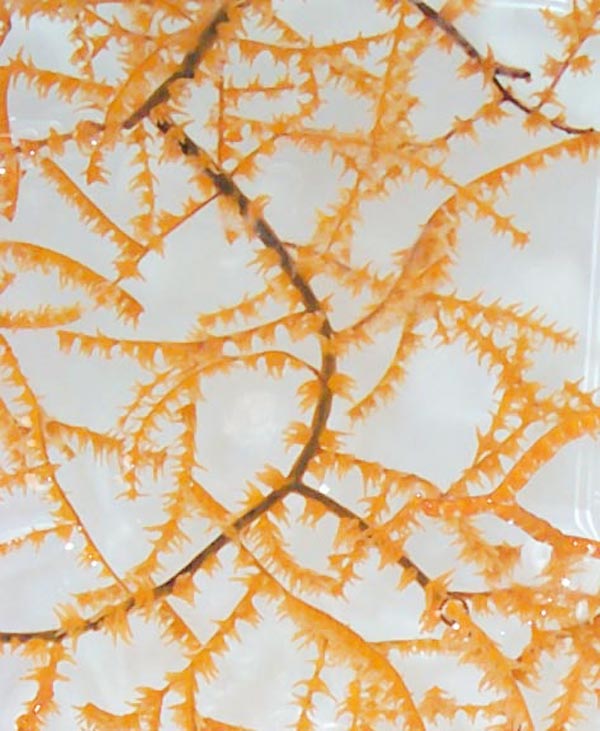
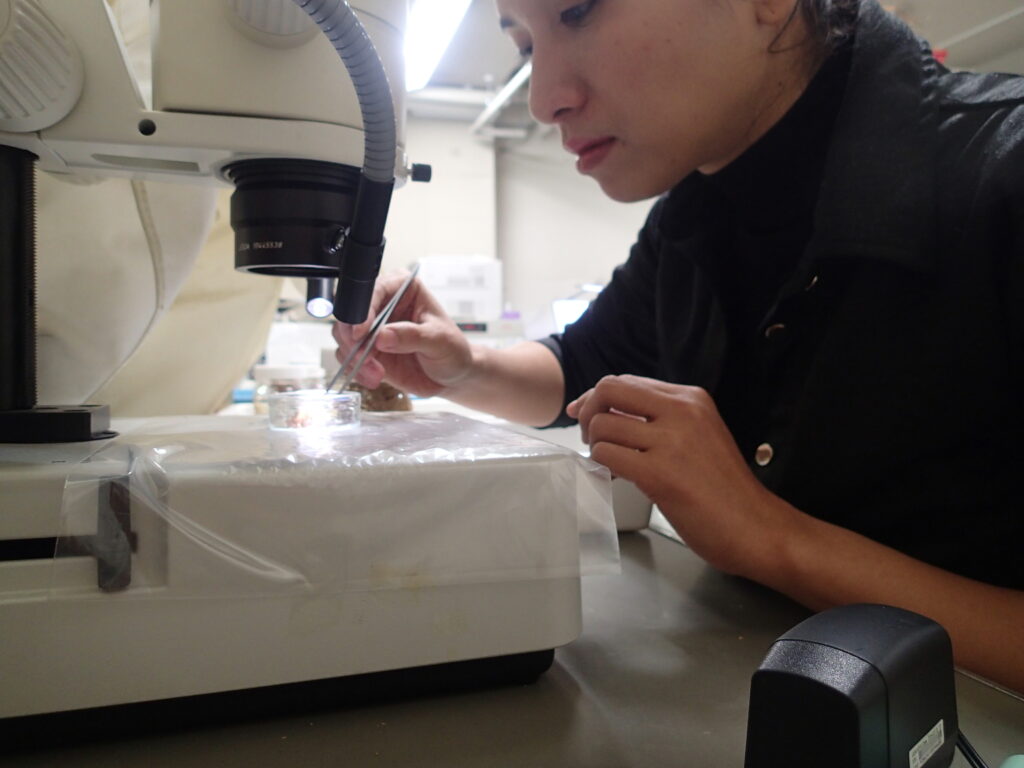
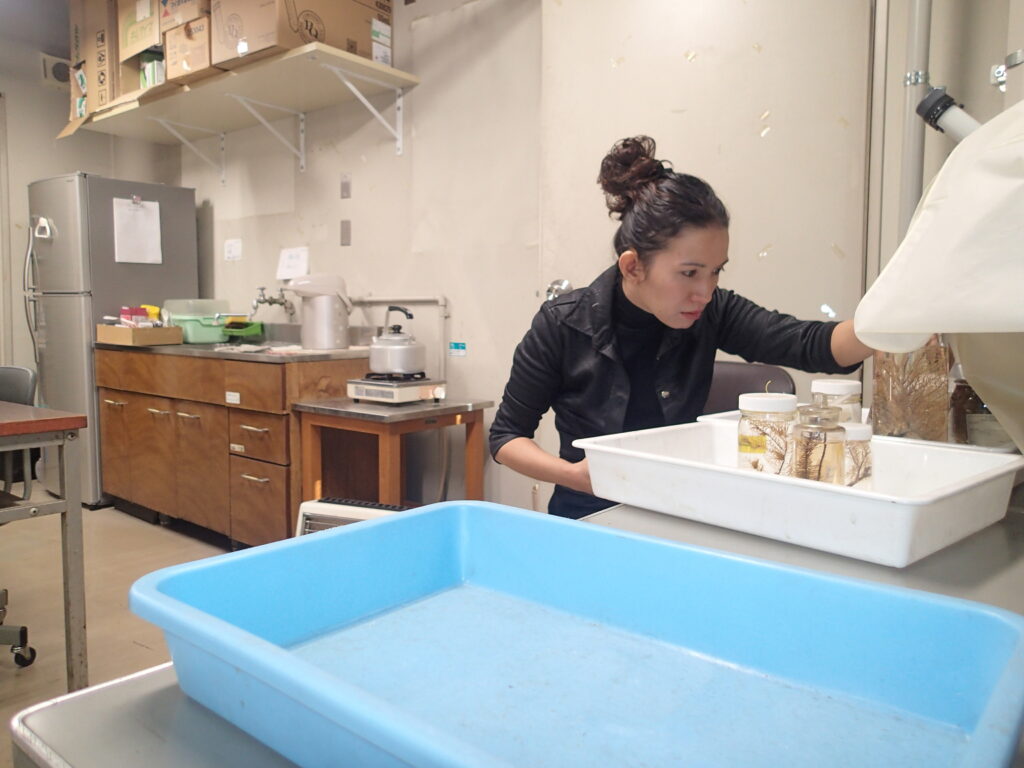
How did you study these animals?
I had been diving since 1997, while studying marine biology as an undergrad. I took advanced certification and training for my fieldwork on black corals during my PhD because they tend to grow at low-light depths.
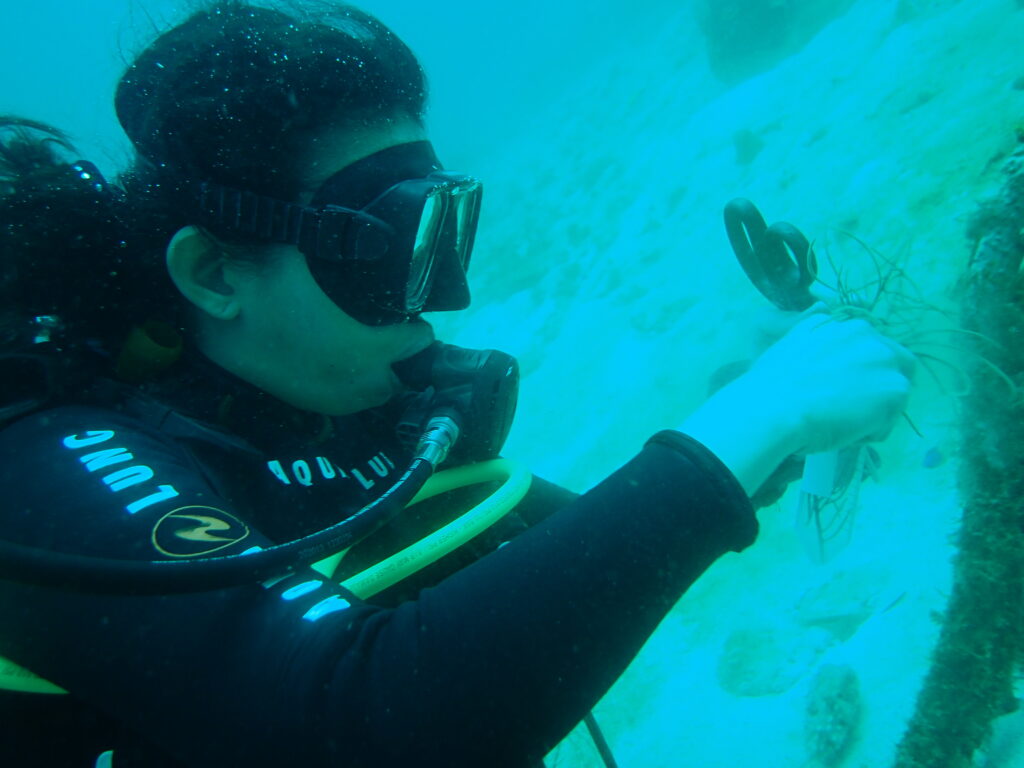
The skeleton of these corals grows in several patterns that are unique to black corals, such as fans, trees, or coils. Skeletons are also lined with tiny spikes. The tiny details of these spikes need to be observed under a Scanning Electron Microscope (SEM) to accurately determine and distinguish between different coral species. There have been significant revisions in the classification of black coral species even at the family level after the advent of microscopic analysis techniques. DNA sequencing is heralding another wave of revisions.
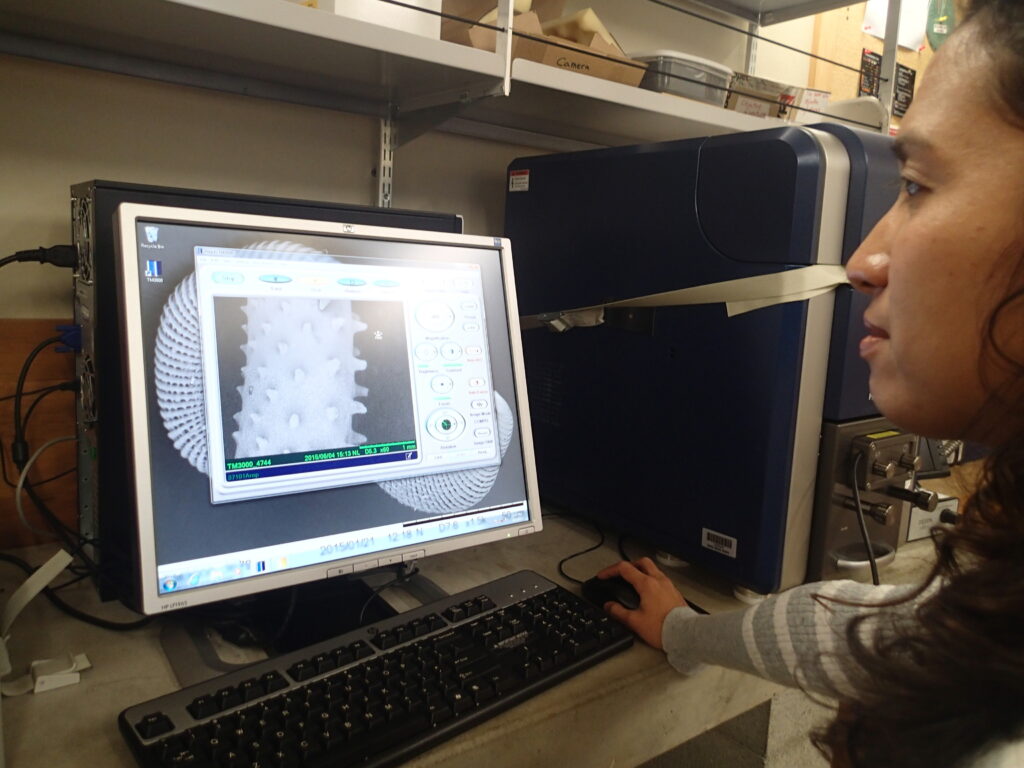
All this time I had been juggling my teaching and research responsibilities as well as traveling between Tagbilaran and Cebu. The University allowed me some time off to finish my PhD.
Did you return to teaching at HNU immediately after your PhD?
After completing my dissertation, I went back to teaching for a bit but felt rather burnt out. So my husband and I took a vacation to travel but even that did not change much. It was relaxing to take a break but I realized on my return that I would still be traveling back and forth between cities to keep up with my teaching workload. This is when I contemplated resigning from my post at HNU. However, resigning would mean having to pay the University back for all their financial support during my PhD. Their generous support came with the understanding that I would be working in a full-time capacity at HNU after my degree. I felt unable to give myself fully to my job and I didn’t want to make a half-hearted effort because it felt like I was robbing my students of an enriching educational experience. This is yet another time where seeking advice from my colleagues and the administration at the University proved to be a life-saver.
In 2019, the University had been contemplating the development of a marine science laboratory on a piece of land at Anda, which is a municipality of the province of Bohol. They suggested that as my return service I could be involved in the management and development of this research site. I would be receiving an honorarium for my services. This seemed like a wonderful way for me to give back to the University. Even though I wanted a break from my full-time job, I had been afraid of sitting idle at home with nothing to occupy me. My new position allowed me to monitor the progress of the laboratory from my home in Cebu, with occasional travel to Anda.
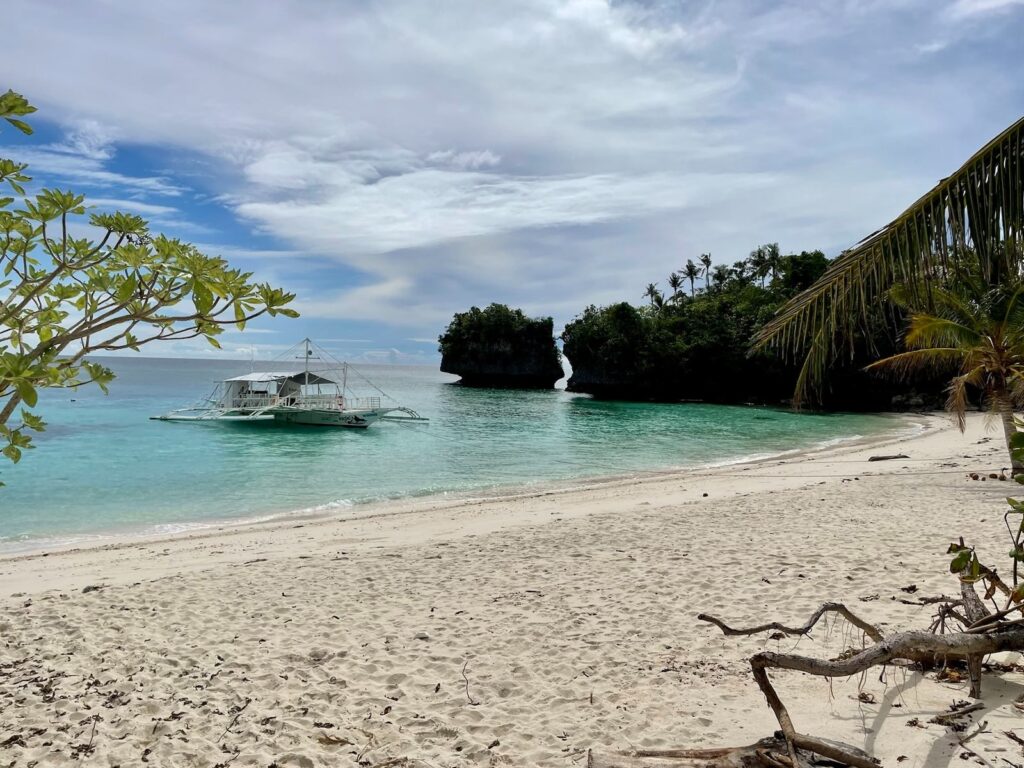
What’s the most exciting thing for you in your current position at HNU?
This position gave me the space to think carefully about what I’d like to do next. With the pandemic in 2020, I gradually included teaching online into my schedule and found myself being excited about finding ways of making online learning engaging for my students at HNU. As the development of the research site progressed, I began looking for new research opportunities.
What’s next for you once the research site is fully developed?
I was approached by the Marine Sciences Institute at the University of the Philippines for a collaborative project on mesophotic corals. Black corals are a part of the low-light mesophotic coral ecosystem*. Scleractinian or stony corals, on the other hand, are found in shallower regions of the ocean.
The idea behind the project was to study the biodiversity and ecosystem functioning of the under-explored mesophotic zone. I became a part of this team in late 2020 and had a lot of fun working on developing the research proposal for funding. Our project- which is a collaboration between University of the Philippines, Mariano Marcos State University, and Holy Name University – was approved earlier this year** and in November 2022 we began assessing the biodiversity of mesophytic corals in the mesophytic zone. I now plan to devote myself to this project as collaborator and manager of HNU’s Marine Science Centre at Anda. My love for science education also compels me to continue teaching a couple of subjects at the University every semester.
In the long term, the idea is to develop the Centre as a leader in fundamental marine science research and work with the College of Law at HNU to expand its scope into marine and climate policy.
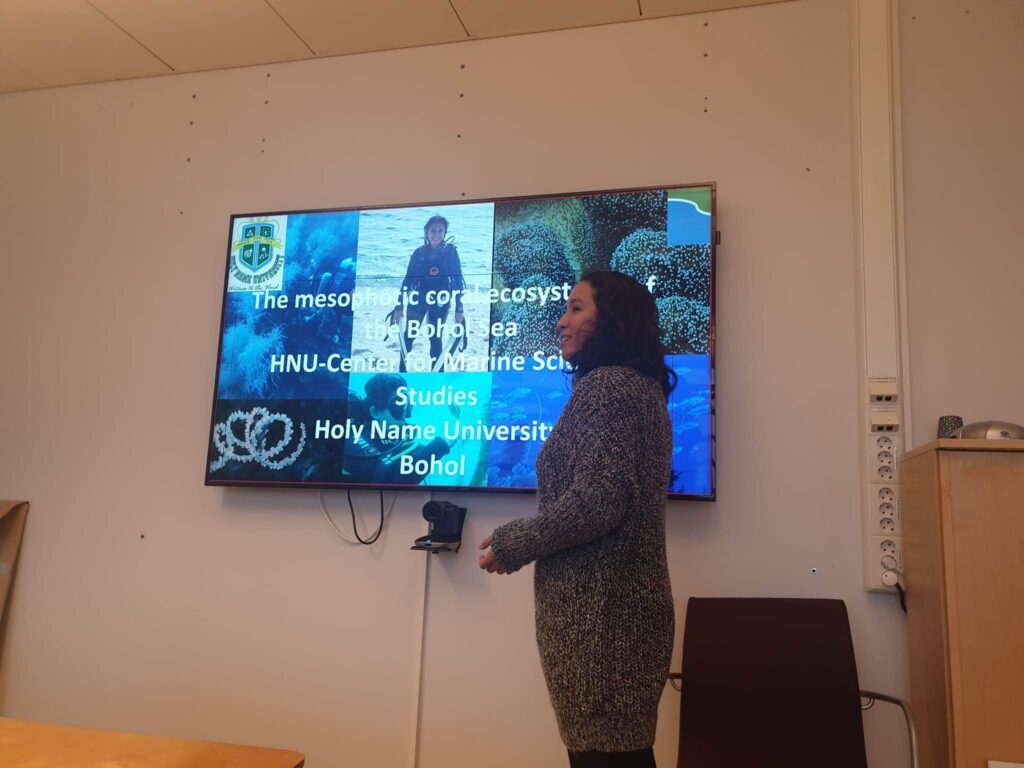
*The mesophotic coral ecosystems are unique habitats that exist in the ‘twilight zone’ between 30 and 40 meters and up to 150 meters in tropical and subtropical water. These ecosystems are characterized by low light conditions and are home to several species of corals, sponges and algae.
**This interview was conducted in December 2022
Now let’s talk about what it’s like to be a woman of color in STEM. Pursuing a career in academia comes with its unique set of challenges. Do you feel you have equal opportunities compared to your male counterparts? How has being a woman in science impacted your scientific career?
Due to the amount of physical work that is required to do our research, many people think that marine biology is a field for boys. However, from my undergrad to my PhD journey to this date I’ve never really experienced any gender-based discrimination at work. Even at male-dominated fora — such as when I was working with communities of fishermen — I have been fortunate enough to be treated with equal respect and have enjoyed the same benefits as my male colleagues.
Does this perception of marine biology being more suited for men affect gender ratios in the workplace? If so, is there anything that you wish would change in your field to make it more inclusive for women of color?
Interestingly, I’ve found that there are more women involved in marine biology research than men. At the undergrad level, we started with more males in my course but more females finally graduated. In my Master’s program, it was nearly 50-50. During my PhD and at my workplace, the ratio is definitely biased towards women by as much as 4:1. I think this is a result of policy level changes in research funding within the Philippines- gender and development are now a core aspect of any grant application.
In many conservative households, women are still expected to stay at home and take care of their families but I’m hopeful that this will change because care is being taken at the institutional level to ensure gender equality in the workforce.
Your own experience has demonstrated that academic careers can be very demanding. How do you take care of yourself on the daily?
I take care of myself by having a routine that makes me happy.
I wouldn’t call myself an introvert but I’m just not someone who spends a lot of time with many people. Perhaps because I was raised by my mother who is nearly 40 years older than me. I grew up in a household composed of three women, each from a different generation so I’m not used to crowded places. We always had lots of pets though. Dogs when I was younger and during the pandemic I became a cat lady by adopting a bunch of cats that had been abandoned by their owners. I have six indoor cats. We even converted our spare bedroom into a cat room. As long as everything is clean- they have water and food and a clean litter box, they’re good. We give them toys to keep them busy. I also have a few outdoor cats that I feed. Playing with my cats and taking care of them keeps me active. This is my form of self-care.
When you’re not working, where can we find you?
I don’t dive as much as I used to because of my eyesight and a few serious diving accidents. So when I’m not working, I’m mostly at home with my cats. Before the pandemic, my husband Mel and I would travel long distances a lot. He is my constant human companion. Nowadays, we try to drive to nearby places and try out new restaurants. I also really enjoy doing pasta bakes at home.

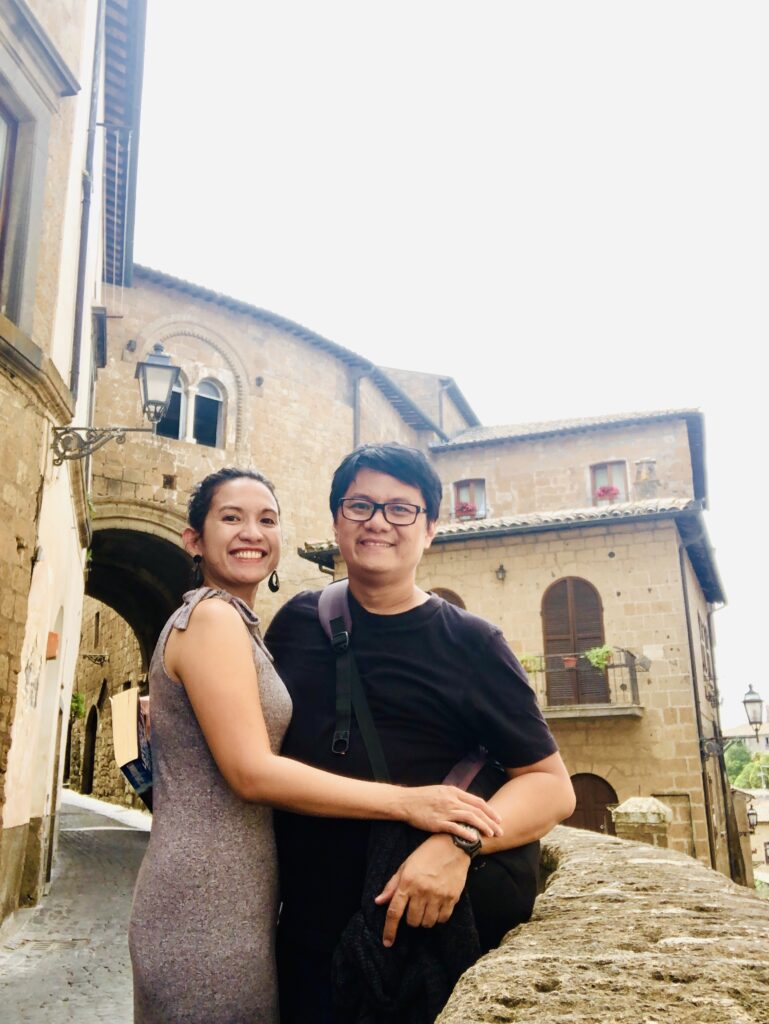
Rapid Fire Round
What’s the first thing that comes to your mind when I say ‘ocean’?
Magical
If you were a plant or an animal what would you be and why?
A cat because I’m not clingy. I like my independence and can scratch when provoked!
What two non-essential items would you want with you if you were shipwrecked on a deserted island?
A deserted island with no people around sounds like a dream come true. The first would be a long and engaging book. I’d also carry a pillow with me so I can read in comfort.
Photos courtesy of Hyacinth Suarez (unless specified otherwise).


Leave a Reply